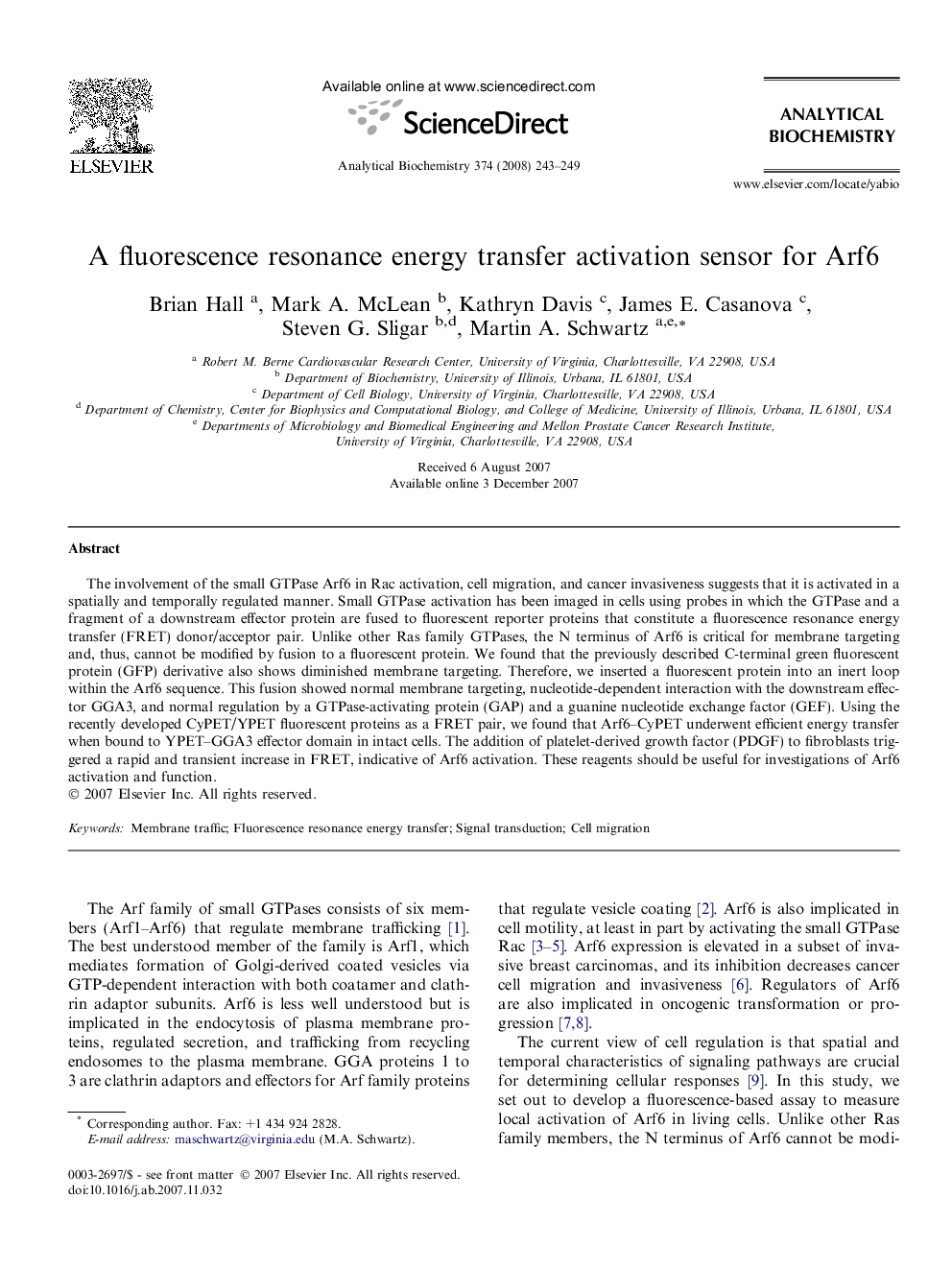| Article ID | Journal | Published Year | Pages | File Type |
|---|---|---|---|---|
| 1175457 | Analytical Biochemistry | 2008 | 7 Pages |
The involvement of the small GTPase Arf6 in Rac activation, cell migration, and cancer invasiveness suggests that it is activated in a spatially and temporally regulated manner. Small GTPase activation has been imaged in cells using probes in which the GTPase and a fragment of a downstream effector protein are fused to fluorescent reporter proteins that constitute a fluorescence resonance energy transfer (FRET) donor/acceptor pair. Unlike other Ras family GTPases, the N terminus of Arf6 is critical for membrane targeting and, thus, cannot be modified by fusion to a fluorescent protein. We found that the previously described C-terminal green fluorescent protein (GFP) derivative also shows diminished membrane targeting. Therefore, we inserted a fluorescent protein into an inert loop within the Arf6 sequence. This fusion showed normal membrane targeting, nucleotide-dependent interaction with the downstream effector GGA3, and normal regulation by a GTPase-activating protein (GAP) and a guanine nucleotide exchange factor (GEF). Using the recently developed CyPET/YPET fluorescent proteins as a FRET pair, we found that Arf6–CyPET underwent efficient energy transfer when bound to YPET–GGA3 effector domain in intact cells. The addition of platelet-derived growth factor (PDGF) to fibroblasts triggered a rapid and transient increase in FRET, indicative of Arf6 activation. These reagents should be useful for investigations of Arf6 activation and function.
